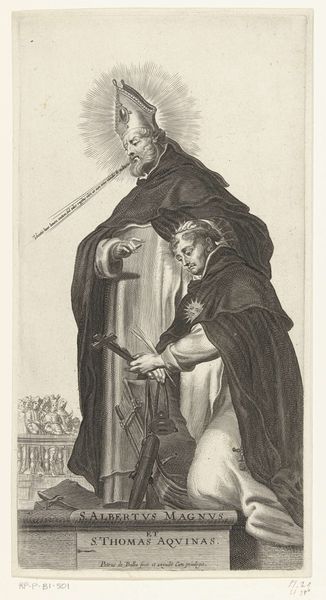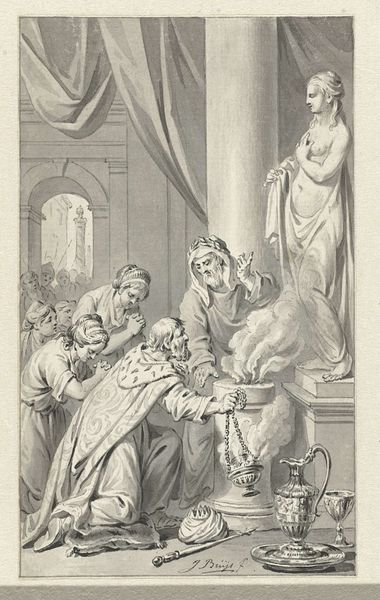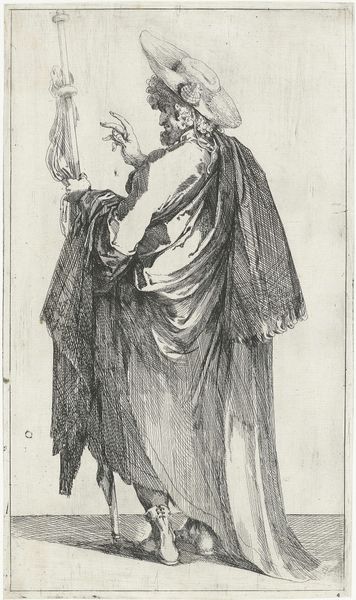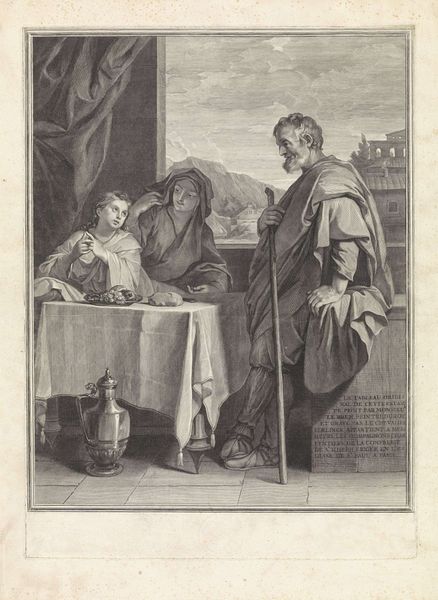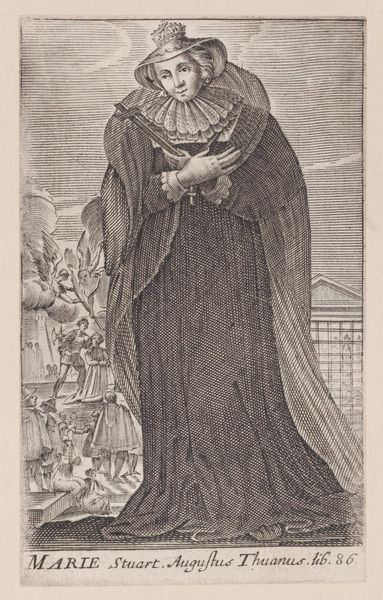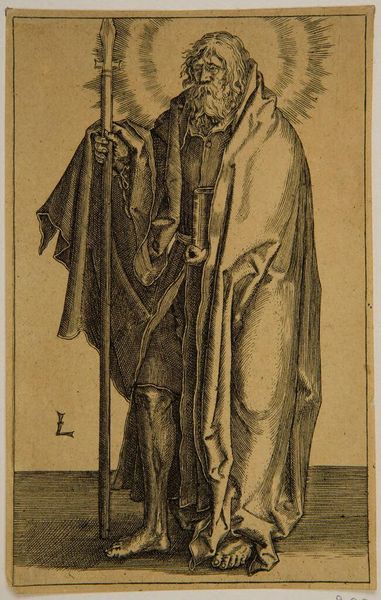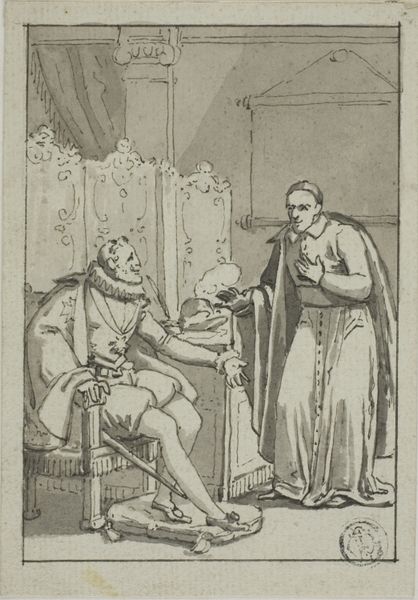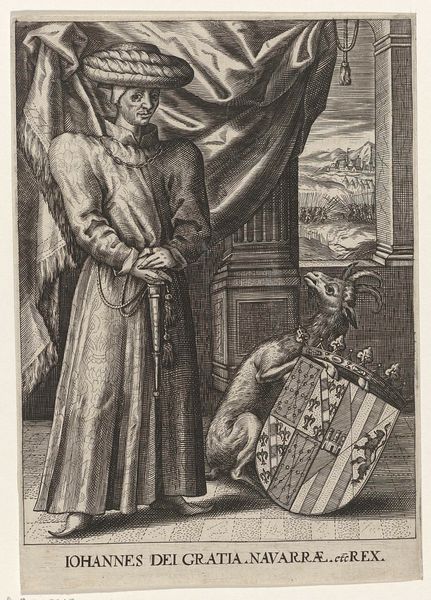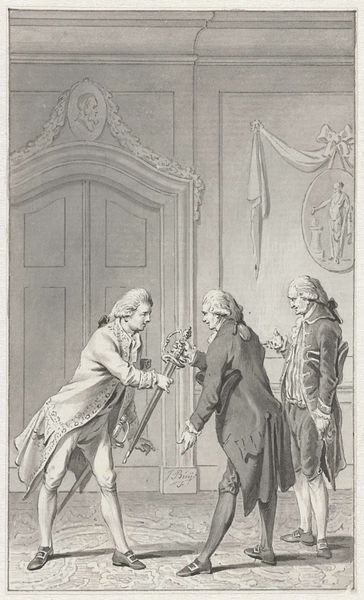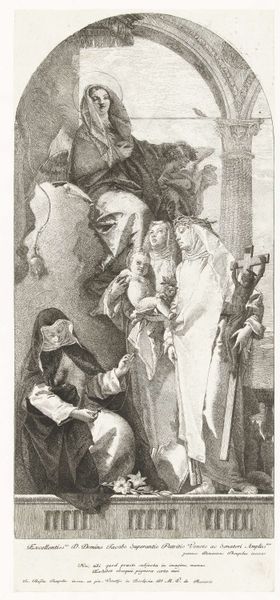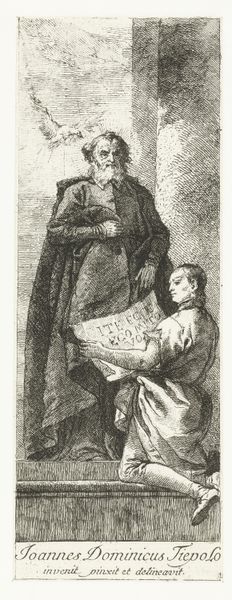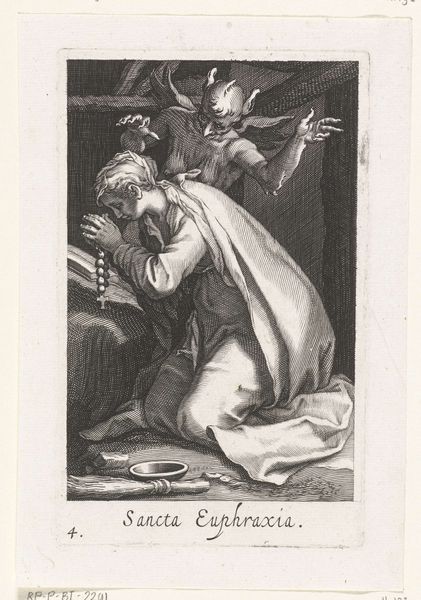
Dominicaanse heiligen Albertus Magnus en Thomas van Aquino 1623 - 1660
0:00
0:00
#
pencil drawn
#
toned paper
#
light pencil work
#
pencil sketch
#
old engraving style
#
personal sketchbook
#
portrait reference
#
pencil drawing
#
portrait drawing
#
pencil work
Dimensions: height 264 mm, width 135 mm
Copyright: Rijks Museum: Open Domain
Editor: So this is "Dominicaanse heiligen Albertus Magnus en Thomas van Aquino," or Dominican Saints Albertus Magnus and Thomas Aquinas, made between 1623 and 1660 by Pieter de Bailliu. It's a pencil drawing on toned paper. It feels quite formal, almost like a staged photograph. What can you tell me about this work? Curator: Well, the formality you perceive isn't accidental. Consider the era: the Counter-Reformation. The Catholic Church sought to reaffirm its authority through art, and images of saints played a crucial role. Notice how Albertus Magnus seems to bestow knowledge upon Thomas Aquinas through a divine beam of light—a metaphor for theological succession, reinforcing the legitimacy of their teachings. What about their depiction strikes you? Do you see any visual cues about power dynamics? Editor: I see that Albertus Magnus is much taller and imposing. He's also older, with the papal mitre and dove hovering behind. It's as if Aquinas is receiving knowledge but is in a subordinate position. I wonder if this reinforces certain hierarchies within the Church? Curator: Exactly! Think about the societal implications: this image not only sanctifies religious figures, but also entrenches patriarchal structures and scholarly traditions that privileged certain voices over others. Consider how access to education and religious interpretation were largely restricted. How might this image contribute to a specific understanding of knowledge and authority? Editor: I guess it presents a very top-down view, where wisdom flows only from the established authorities to those deemed worthy. I hadn't really considered how actively images promote ideology like this. Curator: Precisely. These images weren't just decorative. They actively shaped social consciousness and power relations. Examining art through this lens enables us to critically evaluate the values that shaped, and continue to shape, our world. Editor: It’s definitely given me a lot to think about – seeing art as a way of both reflecting and reinforcing historical inequalities.
Comments
No comments
Be the first to comment and join the conversation on the ultimate creative platform.
